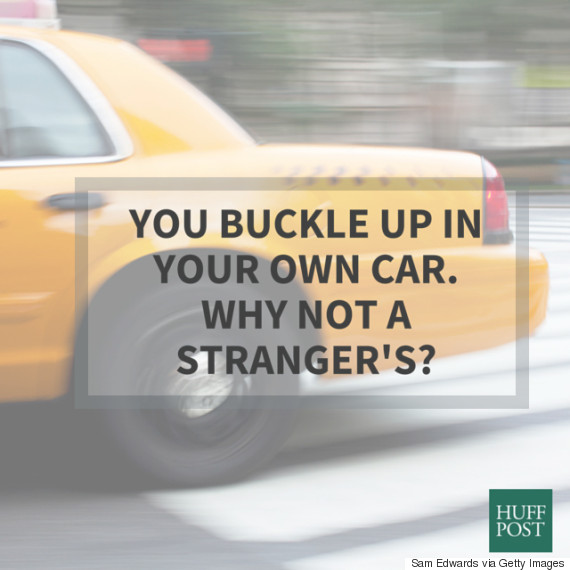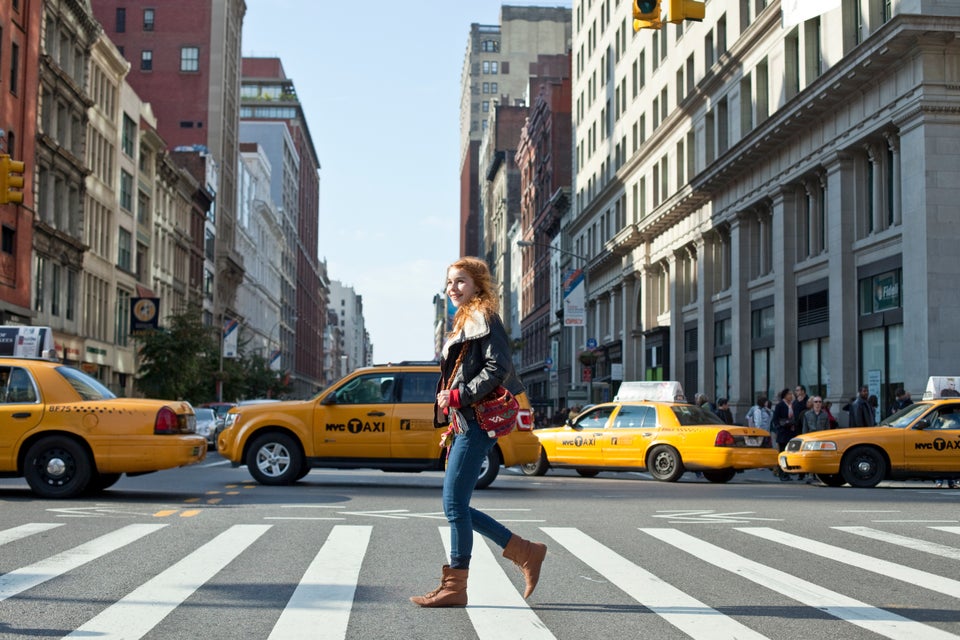
Riding in a taxi without a seat belt isn't just a big city public health problem. Thanks to the popularity of car-hailing services such as Uber and Lyft, everyone's sliding into the backseat of a cab these days.
In private cars, you know to buckle up. And you're not alone: 87 percent of Americans use a seat belt, according to the latest national survey from the Department of Transportation.
Paradoxically, that changes the minute a car is driven by a stranger: According to a 2014 New York City Taxi and Limousine Commission survey, 57 percent of taxi passengers don't buckle up without prompting. What's more, 46 percent of passengers who don’t wear a seat belt in taxis do wear one when riding in private cars. Lyft doesn't collect seat belt data and Uber didn't respond to requests for comment, but if the New York taxi survey is any indication, this is a widespread car safety issue.
Ozlem Simsekoglu, an assistant professor who specializes in traffic and social psychology at the Izmir University of Economics in Turkey, said taxi passengers may correlate taxi drivers' long hours behind the wheel with better driving skills and assume that the probability of an accident is very low -- especially if the passenger is only traveling a short distance.
In reality, riding in a cab without a seat belt is dangerous. Though a 2004 study found that New York City taxis had a lower rate of accidents than private cars, even a simple fender bender can cause grievous facial injuries to unbuckled passengers, who can slam into the taxi partition face first if they aren’t held back by a seat belt. And the danger doesn't end there: CBS News correspondent Bob Simon was killed in a livery cab crash in Manhattan in February, only two years after the deaths of two newlyweds in a livery cab crash in Brooklyn.
Matthew White, M.D., director of facial plastic and reconstructive surgery in the Department of Otolaryngology at NYU Langone Medical Center, has treated a number of patients who suffered facial trauma from taxi accidents. He says the injury is common at NYU Langone and Bellevue Hospital.
“It’s devastating for patients,” White says. “The momentum of the force [of the crash] carries the passenger forward into the acrylic glass and slams their face right into it. There is a lot of bone trauma, so facial fractures -- things like nose fractures, cheek fractures or what we call the tripod fracture,” he added, referring to an injury that breaks the bones that support the face.
Though the resulting injuries can be grisly (one New York City woman needed 50 stitches after a 2012 crash), according to White, they are extremely preventable. “The very act of wearing your seat belt to prevent that forward momentum and the individual’s face hitting the acrylic glass is enough,” White says.
Does White follow his own advice? Absolutely. “Every time I get into a cab I think of some of my facial-trauma patients. There have been so many times when I’ve gotten in a cab, and I have a Starbucks coffee, and I’m in a hurry and I’m like “Ugh, I don’t have time for this. But every time, I stop [and do it].”
